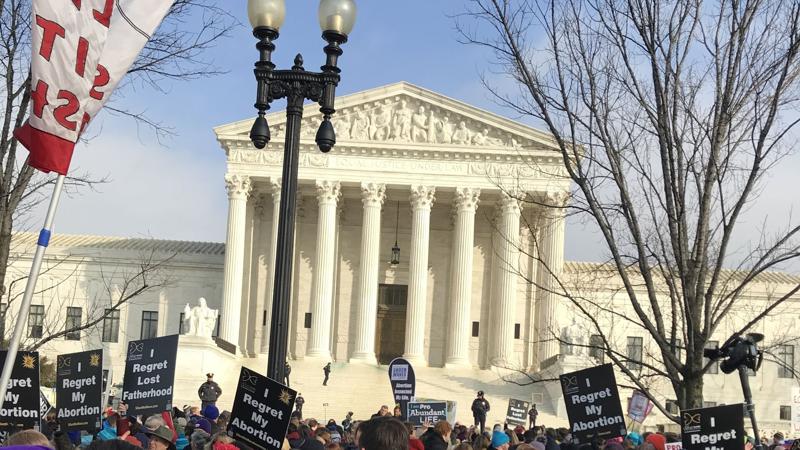The U.S. Supreme Court on Thursday heard arguments over whether district judges can issue nationwide injunctions against President Donald Trump’s executive order on birthright citizenship. Based on justices questions, it’s unclear how the court will rule.
On his first day back in office, Trump signed an executive order attempting to reinterpret the 14th Amendment of the Constitution, which was passed by Congress just after the Civil War and has historically been interpreted to bestow citizenship to anyone born in the United States. Entitled “Protecting the Meaning and Value of American Citizenship,” the order contended that birthright citizenship was never meant to apply to the children of people who have immigrated to the country illegally or who are in the U.S. on a temporary status.
“This order reflects the original meaning of the 14th amendment, which guaranteed citizenship to the children of former slaves, not to illegal aliens or temporary visitors,” Solicitor General D. John Sauer argued for the administration in his opening statement to the court.
But Thursday’s oral arguments revolved around whether judges have the authority to issue nationwide injunctions in cases brought by a limited number of plaintiffs, or whether it’s an abuse of their power, with the constitutionality of the birthright citizenship executive order a kind of secondary issue.
The plaintiffs in this case argued that the Supreme Court must take the order into account when making their decision – according to an often-used judicial rubric for evaluating requests for preliminary injunctive relief – but both sides were supposed to focus their arguments on the legality of the judicial practice of universal injunctions.
Injunctions prevent the enforcement of an action until a court rules otherwise. The administration is opposing lower courts’ use of nationwide injunctions, as dozens have been ordered against Trump initiatives just a few months into his second term.
Sauer argued that the judicial powers granted in Article III of the Constitution “[exist] only to address the injury to the complaining party,” and nationwide injunctions – by virtue of the fact that they’re nationwide – affect many more people outside of those involved in the case.
Justice Ketanji Brown Jackson challenged that explanation.
“It’s a very common concept for the court to enjoin a defendant from doing particular unlawful behavior, and what you’re now asking us to do is to require that the court have an additional limitation in its order that you only have to stop doing this with respect to the plaintiff, and that’s the part that I don’t understand.”
Other justices questioned Sauer about the administration’s willingness to respect judicial authority. Justice Amy Coney Barrett offered a hypothetical similar to challenges the administration has seen.
“I’m talking about this week, the second circuit holds that the executive order is unconstitutional and then what do you do the next day or the next week?” Barrett asked.
“Generally, we follow them,” Sauer replied.
Several justices noted that nationwide injunctions and clashes between the executive and judicial branches had become more common in the past several decades and asked Sauer to elaborate on why he thought that was the case.
The plaintiffs defended the validity of nationwide injunctions in this case as a necessary means for checking executive overreach.
“This injunction was properly designed so that the states would get relief from our own Article III injuries, as we suffer significant pocketbook and sovereign harms from implementation of this executive order,” they said.
They also argued that Trump’s executive order would place too great of an administrative strain on the states and generate chaos, who (once the court issues a ruling) would potentially only have 30 days to start observing the order.
“Its approach would require citizenship to vary based on the state in which you’re born or even turn on or off when someone crosses state lines, raising serious and unanswered administrability questions, not just for the federal government, but also for the states,” argued Jeremy Feigenbaum, a lawyer for the plaintiffs.
Some justices challenged the plaintiffs on relying too deeply on the impact of the executive order while arguing their case.
“Are you telling us that we really can’t decide the question that we asked to have briefing and argument on without taking a peek at the merits?” asked Justice Samuel Alito.
The court seemed to entertain the idea of applying limiting principles to nationwide injunctions, while still allowing the states “something broader for complete relief.”
The court is expected to issue a decision on the case in June or July.







